Traditionally, if you wanted to place an ad online, you’d negotiate directly with websites or publishers. That took time, emails, and sometimes a few headaches. With programmatic advertising platforms, it automates that entire process. Programmatic advertising is like having a smart assistant for your ads. It helps you reach the right people quickly, without all the manual hassle. Instead of sending out your message to everyone, it pinpoints the people most likely to care and puts your ad right in front of them. You can make changes instantly if something isn’t working, stretch your budget further by focusing on what’s effective, and easily move from a small audience to millions. Best of all, it learns from what your audience does, getting better at delivering results with every campaign.
Here are 12 of the best programmatic advertising platforms to give you a clear overview of your choices.
Top 12 Best Programmatic Advertising Platforms
1. Adobe Advertising Cloud
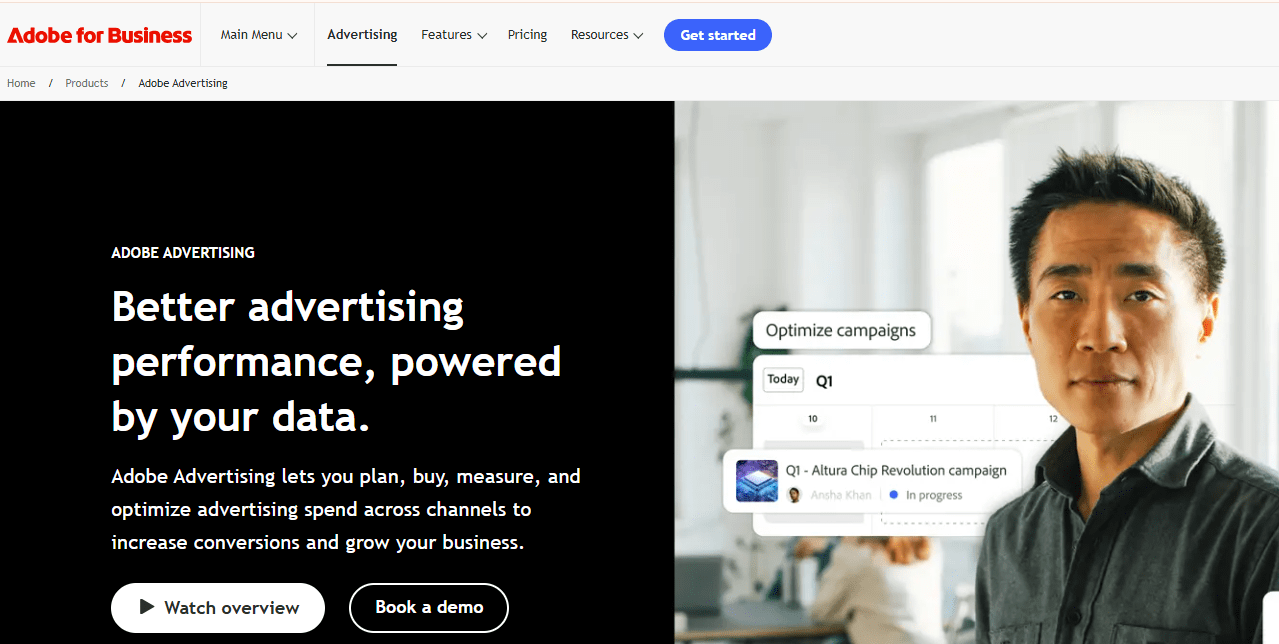
Adobe Advertising Cloud is part of the larger Adobe Experience Cloud, alongside tools like Adobe Marketing Cloud and Adobe Analytics Cloud. It helps businesses run programmatic ads across multiple formats like display, video, mobile, search, and social media. With its real-time analytics, it allows marketers to quickly adjust bids, budgets, and targeting to get the best return on investment.
Features
- Dynamic Creative Optimization (DCO): Automatically adapts ad creatives based on audience data and campaign goals.
- Advanced Audience Targeting: Uses first-party and third-party data for precise audience segmentation.
- Cross-Channel Advertising: Runs ads seamlessly across display, video, mobile, and social platforms.
- In-depth analytic insights to make quick, informed decisions.
Pros
- Integrates with other Adobe marketing tools.
- Strong capabilities for personalizing and optimizing creatives.
- Complete cross-channel view of the customer journey.
- Advanced tracking and attribution tools.
- Strong customer support and training resources.
Cons
- Can be expensive for smaller businesses.
- Steeper learning curve and complex setup.
- Limited usefulness outside the Adobe ecosystem.
Verdict
Adobe Advertising Cloud is a good choice for enterprises already using Adobe’s marketing suite. It’s best suited for complex, multi-channel campaigns that need strong integration, advanced targeting, and deep analytics. For simpler ad needs or small budgets, it may be more than you need.
2. The Trade Desk
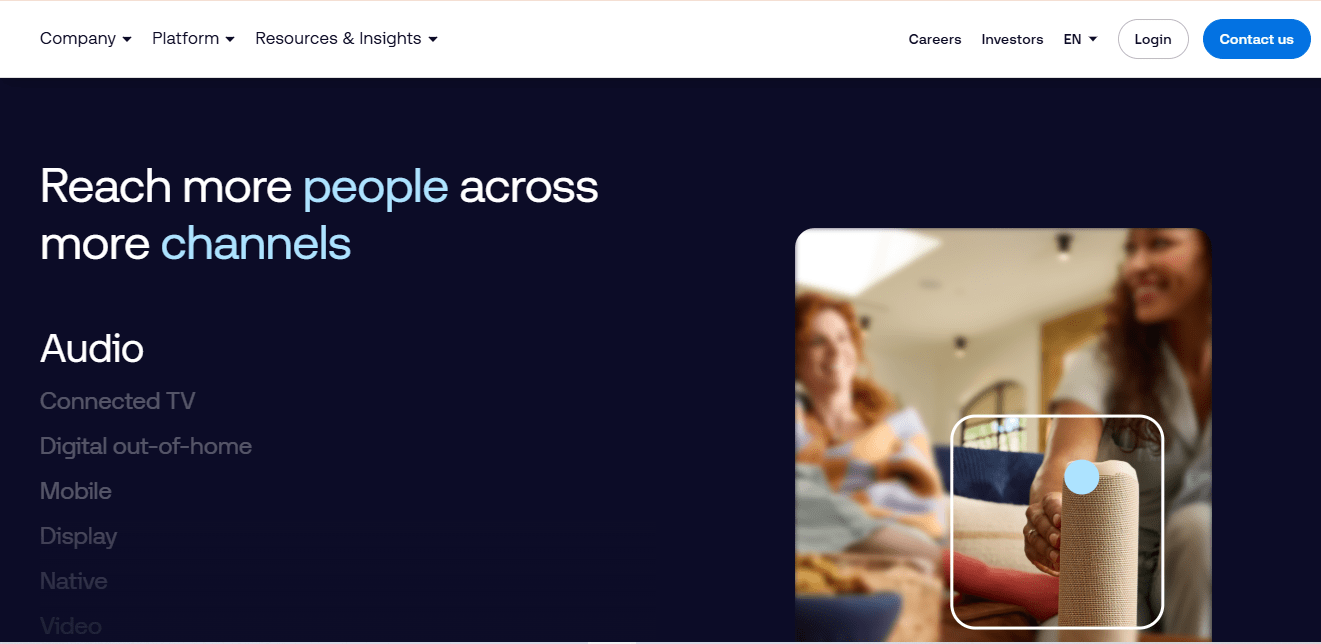
The Trade Desk is one of the largest programmatic advertising platforms (DSPs) in the world. It helps advertisers set and hit multiple KPIs through powerful targeting tools, making it easier to reach the right audience. Its optimization and transparent reporting make it especially useful for marketers who prefer to manage their own campaigns without heavy reliance on agencies.
Features
- Manage omnichannel campaigns across all digital channels
- Advanced audience segmentation and lookalike modeling
- Optimization powered by machine learning
- Integration with third-party data providers.
Pros
- Independent platform for unbiased optimization
- User-friendly interface with strong campaign management tools
- Customer support and training resources.
Cons
- High minimum ad spend requirements
- May feel overwhelming for smaller advertisers.
Verdict
The Trade Desk is a leading independent DSP that offers transparency, flexibility, and advanced tools making it ideal for experienced advertisers who want more control over their campaigns.
3. Google Ad Manager
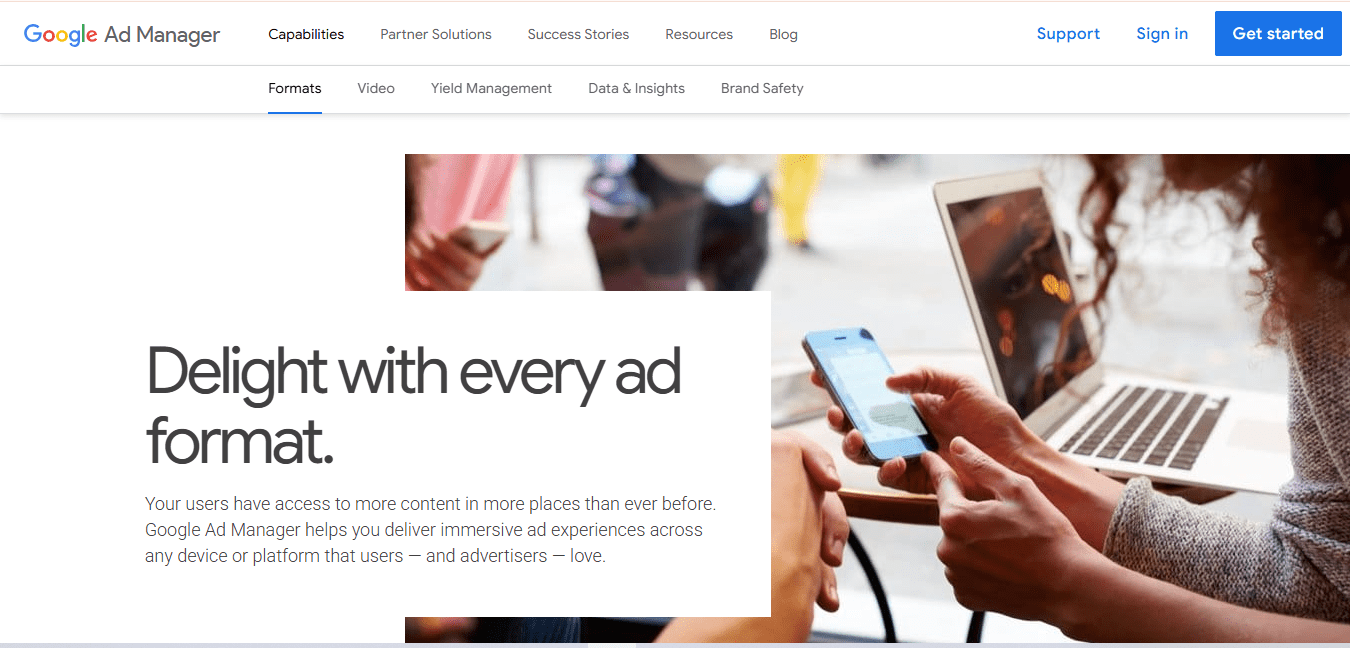
Google Ad Manager is a leading programmatic advertising platform built mainly for large publishers with high traffic and revenue potential. It connects advertisers and publishers through real-time bidding, helping advertisers secure premium placements and publishers maximize ad revenue. The platform uses automation and data-driven tools like dynamic allocation to adjust campaigns based on performance (CPA, CPC, etc.). Publishers can also tap into multiple demand sources to get the best return on their ad space.
Features
- Immediate bidding across Google’s massive ad inventory
- Advanced audience targeting with Google’s first-party data
- Cross-device campaign management for consistent reach
- Dynamic allocation to optimize inventory performance automatically
- Analytics dashboard for performance tracking
- Integration with Google marketing platform tools.
Pros
- Huge reach through Google’s global ad network
- Powerful machine learning for smarter optimization
- Easy integration with other Google products
- Detailed reporting and attribution tools
- Strong fraud detection and brand safety controls.
Cons
- Can be complex for beginners to learn
- Limited third-party integrations outside the Google ecosystem
- Potential conflict of interest since Google controls both supply and demand.
Verdict
Google Ad Manager is the gold standard in programmatic advertising offering unmatched reach, targeting precision, and optimization capabilities. While it’s more suited to experienced users and larger budgets, its powerful feature set makes it indispensable for serious advertisers and publishers.
4. PubMatic
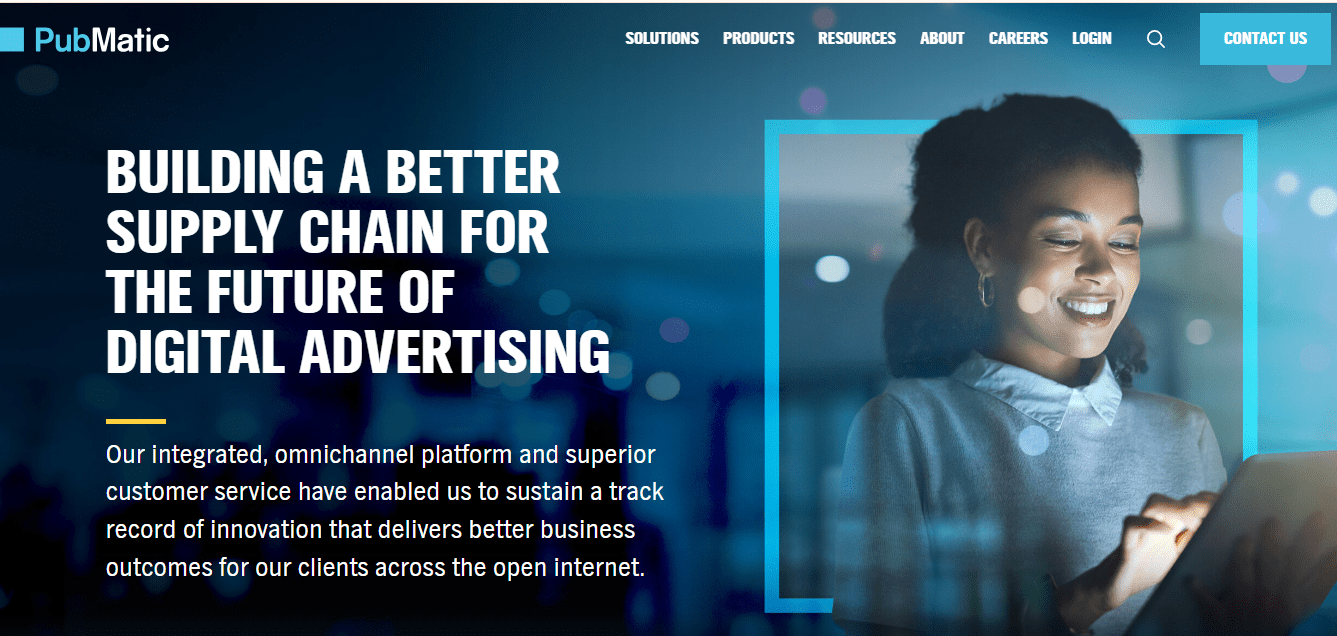
PubMatic is a programmatic advertising platform that connects publishers and advertisers. It offers tools like header bidding, and analytics to help publishers maximize ad revenue and enable advertisers to target audiences more efficiently.
Features
- Advanced tools to increase competition for ad space.
- Maximizes revenue by pulling from multiple demand sources.
- Provides detailed insights for better pricing and placement decisions
- Protects against invalid traffic and unsafe content.
Pros
- Strong focus on increasing publisher revenue.
- Independent platform with no major conflicts of interest.
- Advanced bidding and yield management tools.
- Transparent reporting and analytics for better decision-making.
Cons
- Primarily supply-side focused; fewer demand-side features.
- Smaller reach compared to Google’s Ad Exchange.
- Limited advertiser tools compared to full-service DSPs.
Verdict
PubMatic is ideal for publishers who want to boost programmatic revenue with transparency and advanced tech.
Advertisers also benefit from access to premium, brand-safe inventory though it’s more customized to publisher needs than advertiser tools.
5. Simpli.fi
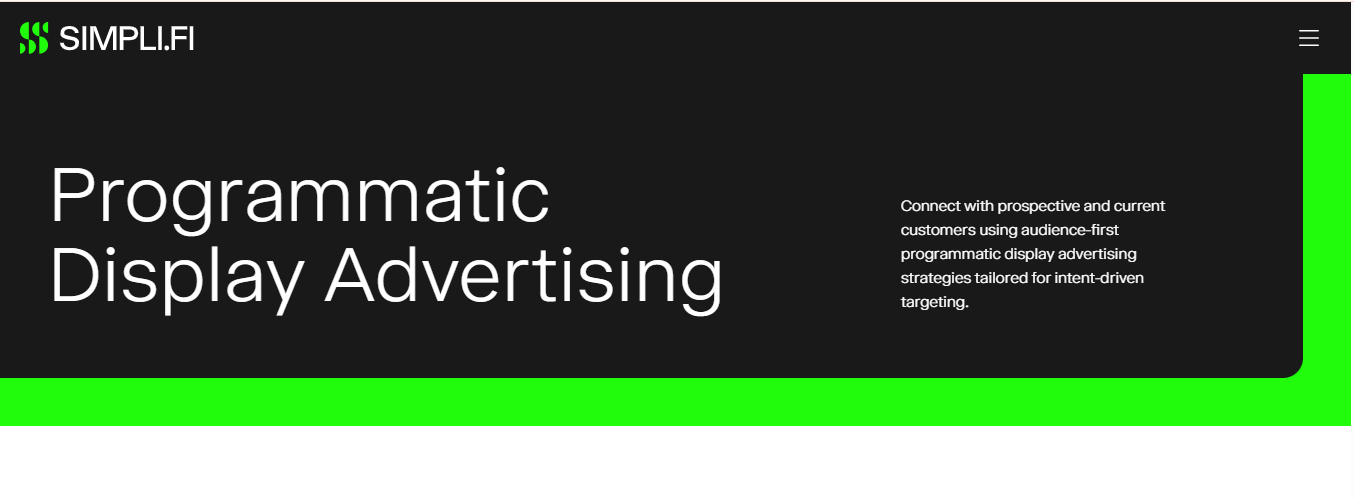
Simpli.fi is a programmatic display platform that helps digital marketers deliver ads to the right people at the right time. It combines a demand-side platform (DSP) with a data management platform (DMP), allowing highly precise targeting, real-time performance insights, and cost transparency.
It is for different advertisers from small businesses and local agencies to larger brands and works across mobile, display, and connected TV (CTV) campaigns.
Features
- Geo-targeting and location-based advertising – Reach audiences based on specific locations.
- Reconnect with past visitors or target based on relevant keywords.
- CTV/OTT Advertising – Run connected TV ads with a focus on local markets.
- Monitor performance instantly across devices.
- Transparent cost management for different budget sizes.
Pros
- Highly effective local and regional targeting.
- User-friendly interface that’s easy for smaller advertisers.
- Strong customer support and account management.
- Competitive pricing for localized campaigns.
Cons
- Smaller ad inventory compared to major DSPs.
- Limited integration with large enterprise marketing tools.
- Lacks advanced attribution modeling for in-depth campaign tracking.
Verdict
Simpli.fi shines in local and regional programmatic advertising. It’s not built for massive enterprise-scale campaigns, but it’s an excellent choice for SMBs, local agencies, and regional advertisers who need strong targeting, a simple interface, and affordable pricing.
6. Magnite
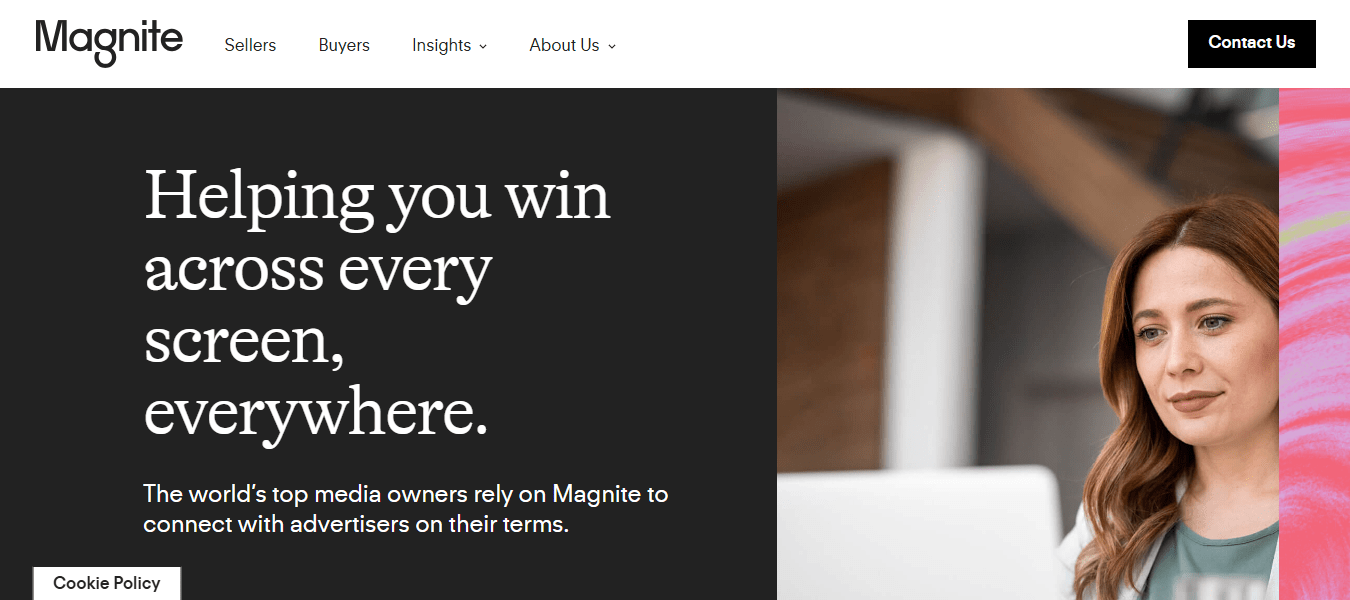
Magnite CTV is a platform that helps publishers make money from Connected TV (CTV) content through programmatic advertising. It gives publishers the tools to manage and optimize ad inventory across different screens and formats, while ensuring a smooth viewing experience for audiences. With advanced targeting and real-time analytics, it connects the right ads to the right viewers, boosting value for both publishers and advertisers.
Features
- Clean supply ecosystem – Ensures quality, fraud-free ad placements.
- Open RTB support – Allows real-time bidding for ad space.
- Programmatic deals – Easy automated buying and selling of ads.
- Private marketplaces – Enables exclusive deals between publishers and advertisers.
- Publisher-focused analytics and reporting – Insights to track ad performance and revenue.
Pros
- Great for small-size publishers.
- No setup fees.
- Excellent client support.
Cons
- Data report updates can be delayed.
- Interface can feel slow at times.
- The reporting portal stops showing bid request data after a certain period.
Verdict
Magnite CTV is a strong supply-side platform, especially for video and connected TV. It’s built to help publishers boost programmatic revenue while keeping a smooth, high-quality user experience.
7. DV360

DV360 is one of the top programmatic advertising platforms, especially for large-scale advertisers. It integrates seamlessly with Google products like Google Analytics, Google Ads, and YouTube, allowing advertisers to use valuable data to create highly targeted, effective campaigns.
Features
- Pinpoint targeting (demographics, interests, behaviors, and context).
- Supports display, video, native, audio, and connected TV (CTV). Runs campaigns across devices and platforms, including YouTube TV and mobile apps.
- Templates and dynamic creative optimization (DCO).
- Integrates with Google Web Designer for easy ad creation.
Cons
- Few non-Google integrations.
- Needs a Google Marketing Platform partnership for full access.
Verdict
DV360 is a top-tier enterprise programmatic platform with unmatched scale, targeting precision, and creative capabilities ideal for large advertisers and agencies looking for advanced, data-driven campaigns.
8. Criteo
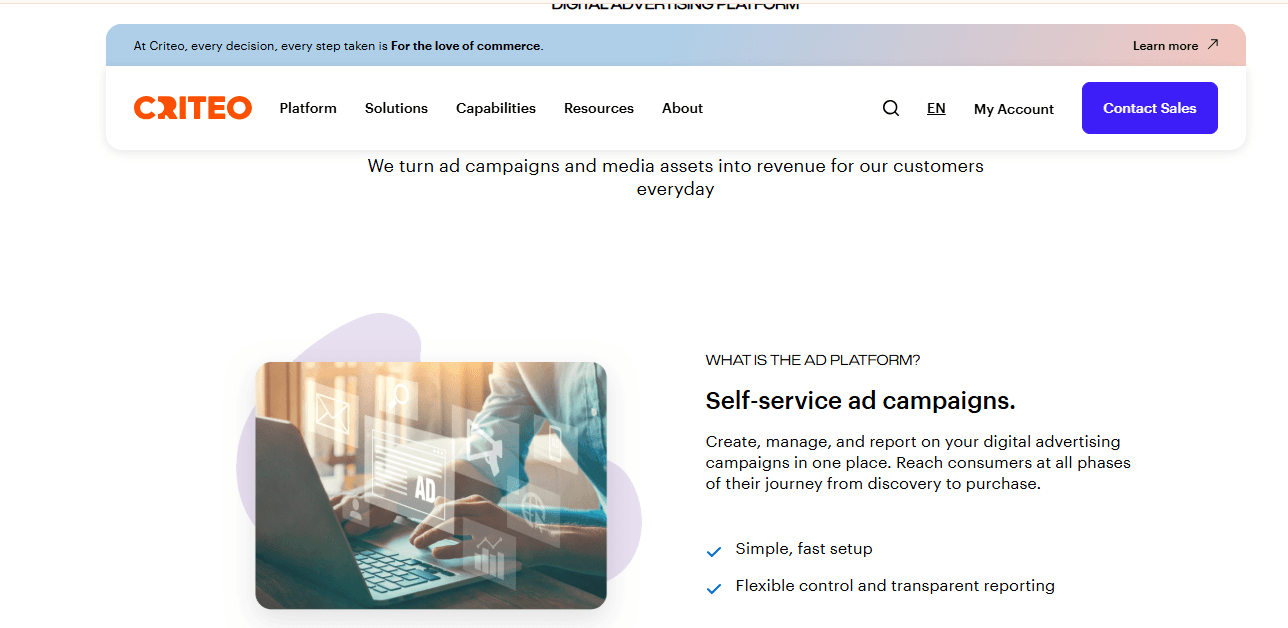
Criteo is a performance-driven growth platform designed for e-commerce and retail businesses. It helps brands connect with shoppers, attract new customers, and keep existing ones engaged. Using artificial intelligence and machine learning, Criteo creates personalized ads based on a shopper’s entire journey across display, social media, mobile, and email.
Features
- Tracks customer journeys across multiple devices
- AI and machine learning-powered ad personalization
- Performance-based pricing model (you pay for results)
Pros
- Highly advanced personalization and product recommendations
- Transparent pricing tied to performance
- Large network of retail partners
Cons
- Limited reach outside commerce-focused ad spaces
- Relies heavily on third-party cookies
- Less suited for broad brand awareness campaigns.
Verdict: Criteo excels in commerce media and retargeting, making it a go-to for e-commerce advertisers. While its niche focus limits use in wider campaigns, its expertise in personalization and retail ads delivers strong ROI.
9. Xandr
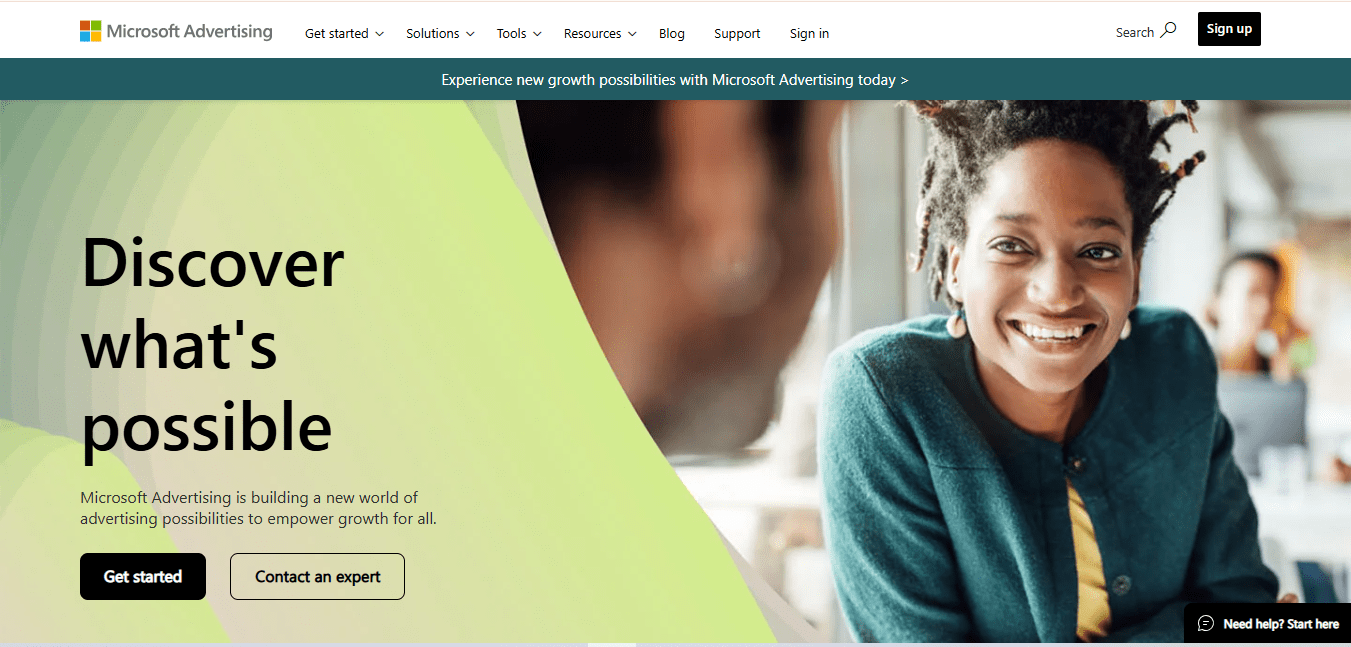
Xandr, a Microsoft subsidiary, is an advertising and analytics platform that enables targeted buying and selling of ad inventory. It focuses on consumer-centric digital environments and supports businesses of all sizes across various industries. The platform works across multiple channels and formats, including display, native, and connected TV.
Features
- Combines linear TV and digital advertising in one platform
- Premium video inventory across multiple channels
- Advanced audience segmentation and targeting tools.
Pros
- Unique mix of TV and digital advertising capabilities
- Access to highly valuable telecom customer data
- Premium, high-quality video inventory across various formats.
Cons
- Cannot automatically optimize budgets between tactics
- Can be expensive compared to competitors
- Complex interface that may require training.
Verdict
Xandr delivers powerful converged TV and digital advertising tools, but its complexity, cost, and uncertainty after corporate changes may impact its long-term reliability.
10. MediaMath
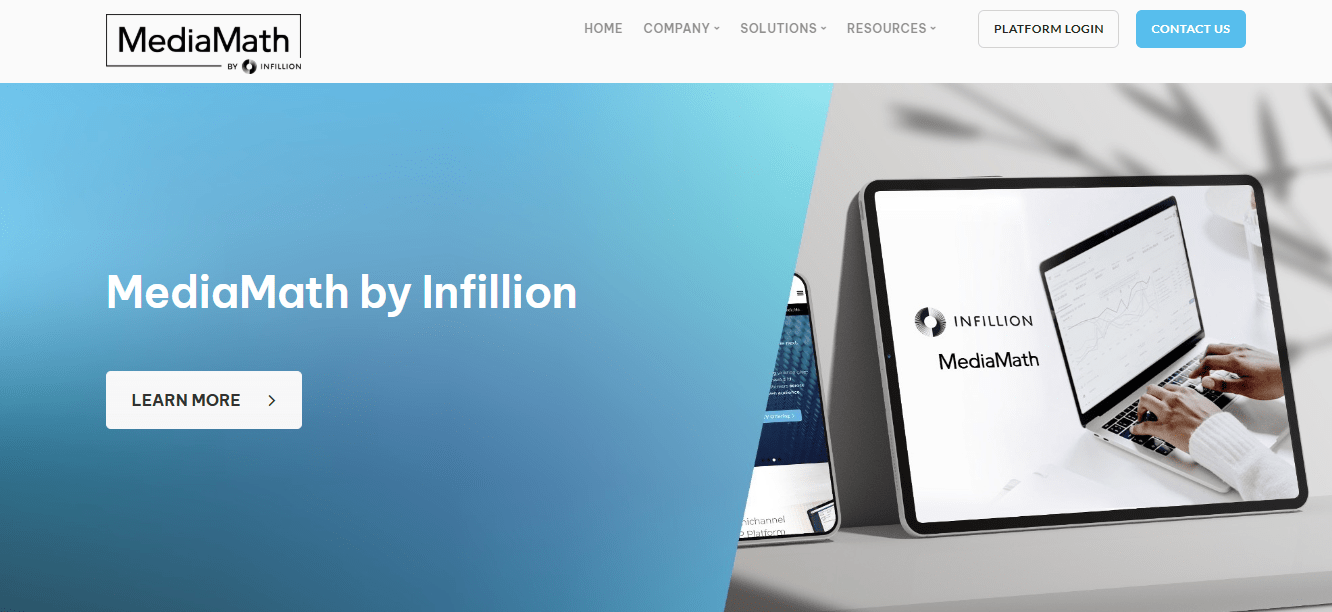
MediaMath is a programmatic advertising platform that helps marketers plan, run, and improve ad campaigns across multiple channels. It partners with many data providers to ensure ads reach the right audience and offers its own data management platform to collect, analyze, and segment audience data for better targeting.
Features
- Easy campaign management tools
- Smart ad bidding for cost-effective placements
- Cross-device attribution to track performance across screens
- Comprehensive reporting and analytics
- Integrated data management platform (DMP).
Pros
- Strong focus on transparency and advertiser control
- Advanced attribution and performance measurement
- Highly customizable platform for different needs.
Cons
- Smaller scale compared to major competitors.
11. SmartyAds DSP
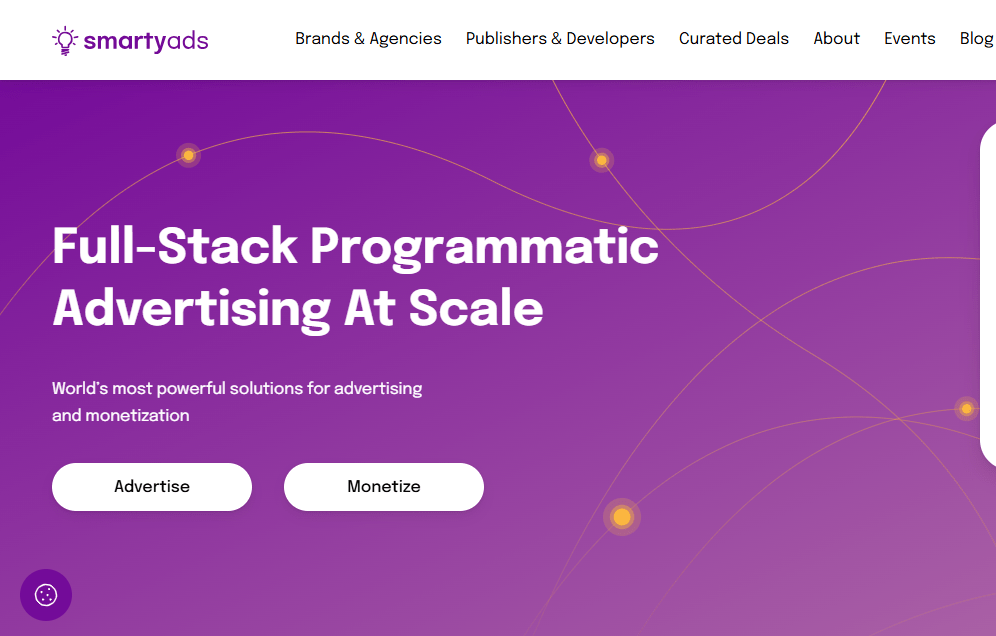
SmartyAds DSP is a cloud-based demand-side platform that helps advertisers and agencies manage ad purchases and run targeted, profitable campaigns. Marketers can target audiences based on factors like location, time, browser type, operating system, IP address, and more making ads more relevant and effective.
Features
- Works with mobile, in-app, and CTV ecosystems; supports banners, native ads, native video, rich media, CTV ads, and custom/IAB sizes.
- Flexible buying methods – Choose between real-time bidding (RTB), direct deals, or private marketplace (PMP) auctions for premium ad space.
- Advanced targeting – Over 30 audience filters including geolocation, language, age, gender, OS, and device type for precise targeting.
- Device compatibility – Optimized for all device types and resolutions.
Pros
- Comprehensive ad format options for multiple platforms.
- Flexible buying strategies for different campaign goals.
- Highly customizable audience targeting.
Cons
- Smaller reach compared to major ad platforms.
- Limited first-party data compared to big “walled garden” platforms like Google or Meta.
Verdict
SmartyAds DSP emphasizes transparency, accessibility, and flexibility. While it may lack the massive scale of industry giants, its feature-rich platform and adaptable pricing make it a great fit for small to mid-sized advertisers looking for control and cost efficiency.
12. Amazon Ads
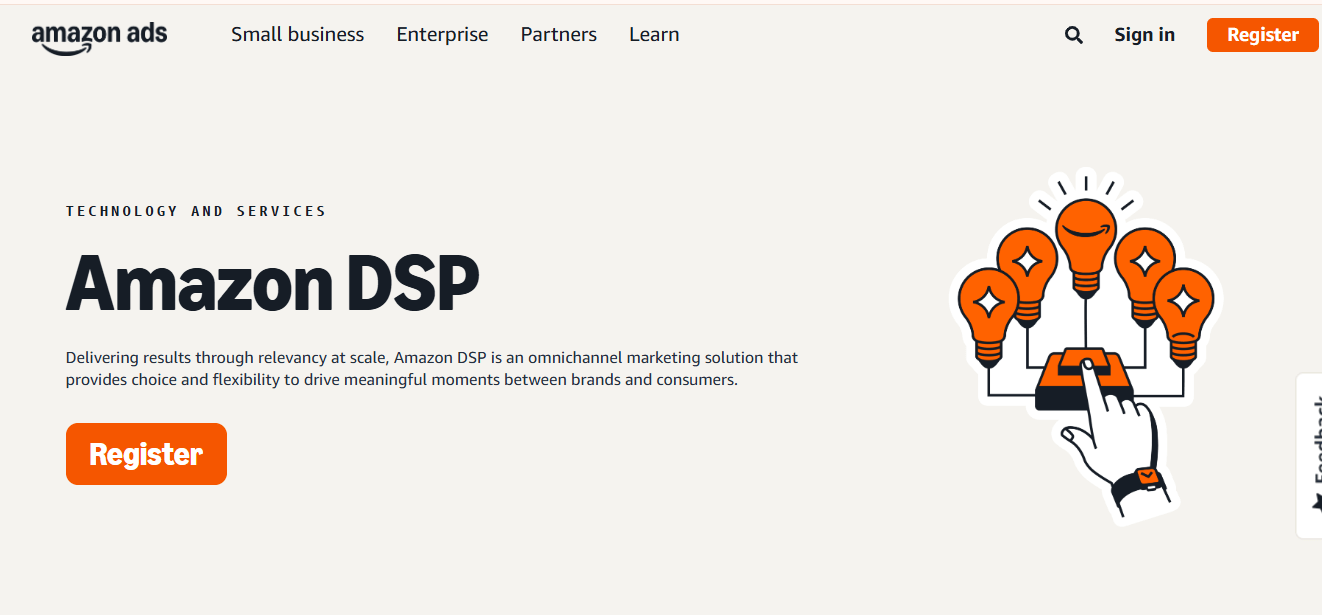
Amazon DSP is a programmatic advertising platform that lets brands target audiences using Amazon’s rich shopping behavior data. It works across Amazon’s own platforms (like Kindle, Fire TV, and Amazon.com) as well as other websites, mobile apps, and devices through its ad network. It’s especially effective for e-commerce brands looking to use Amazon’s first-party customer insights to create highly targeted display, video, and audio ads.
Features
- Access to Amazon’s first-party shopping behavior data
- Targeting based on demographics, interests, and purchase intent
- Cross-device targeting and attribution
- Multiple ad formats: display, video, and audio
- Automated bidding strategies
Pros
- Unmatched e-commerce intent and purchase data
- Premium, brand-safe ad inventory
- Strong performance for retail and e-commerce campaigns.
Cons
- Limited inventory reach outside Amazon’s ecosystem
- High minimum spend requirements
Verdict
Amazon DSP is a top choice for retail and e-commerce advertisers who want to use Amazon’s powerful shopping data for precision targeting and high-performing campaigns.
Programmatic advertising platforms are like having a super-smart, tireless ad manager who never sleeps, constantly finds your perfect customers, and makes sure your budget is being used wisely. In today’s noisy digital space, that’s the difference between just being seen and actually getting results.
When choosing programmatic advertising platforms, think about who you want to reach, what you want your campaign to achieve, how much you can spend, and how well the platform works with your existing tools. Many advertisers use more than one platform to reach more people and benefit from each platform’s strengths. Knowing what each platform can and can’t do is key to running successful ads.

